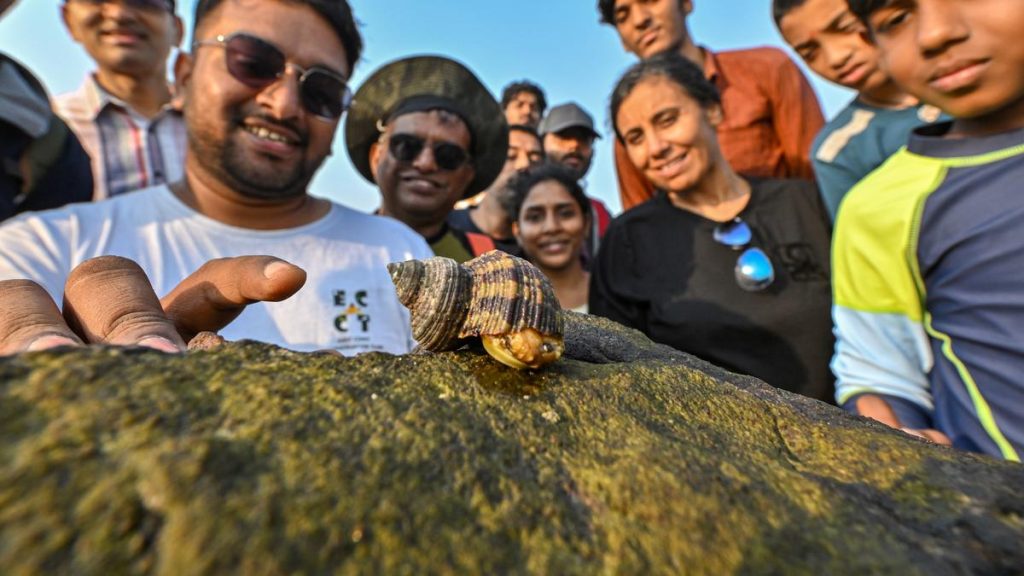The ocean has always called to us with its rhythmic waves, endless mysteries and treasures scattered along the shore. Most of us are drawn by the glimmer of a seashell, a tiny piece of the sea we long to take home. But chances are that shell you want is being used – or will be shortly. A spiralled shell could shelter a hermit crab seeking a safe home. An abandoned conch shell might be the perfect refuge for a shy octopus.
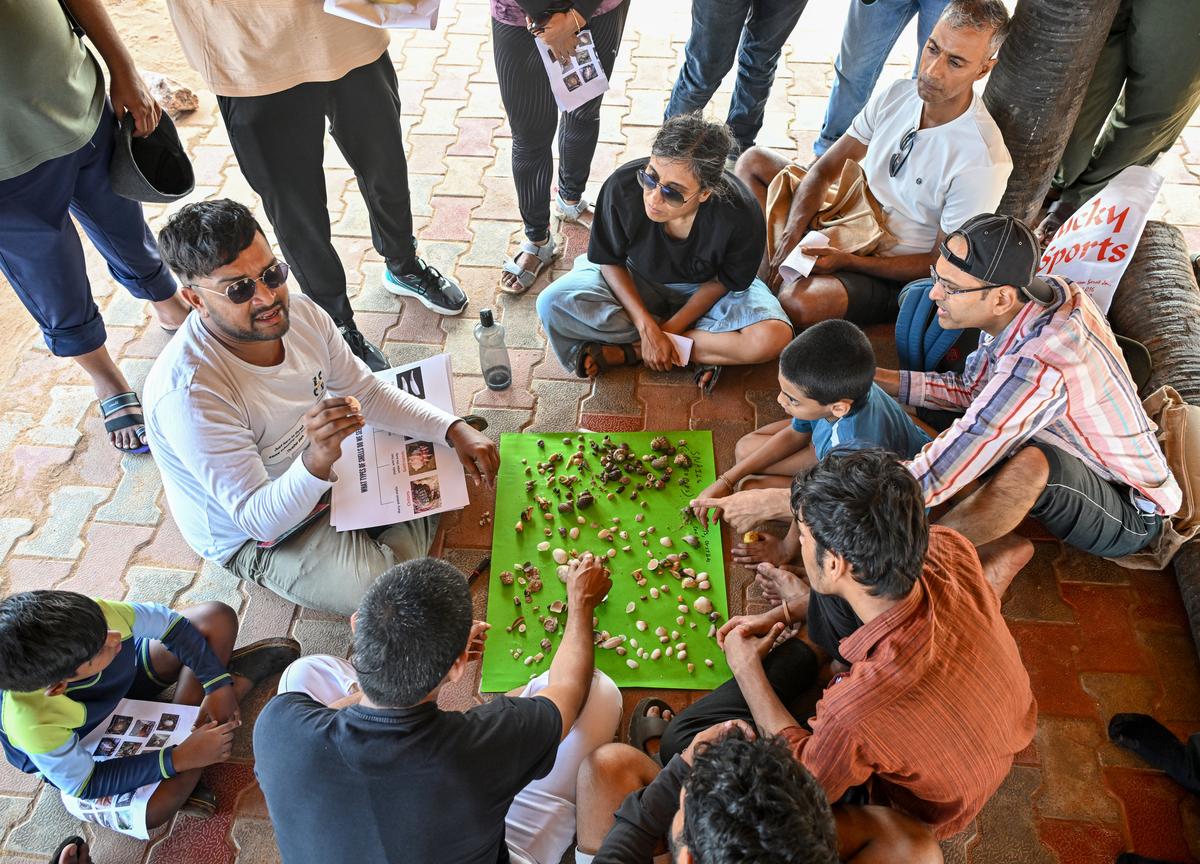
Participants learning about different types of sea shells collected during the Be A Shell Detective walk, an initiative of WWF India in association with ECCT at Rushikonda beach in Visakhapatnam. The sea shells were later returned to the coast by the participants.
| Photo Credit:
KR Deepak
Last Sunday, as part of the International Earth Day initiative, the World Wildlife Fund (WWF) India, in association with East Coast Conservation Team (ECCT), organised a unique intertidal walk at Rushikonda Beach, Visakhapatnam. Titled Be a Shell Detective, the walk engaged participants in discovering the diverse marine life that thrives along the shore, particularly sea shells. The walk offered insights into the various species of shells found along the coast. However, rather than taking them home as souvenirs, the collected shells were returned to the shore, reinforcing their ecological significance.
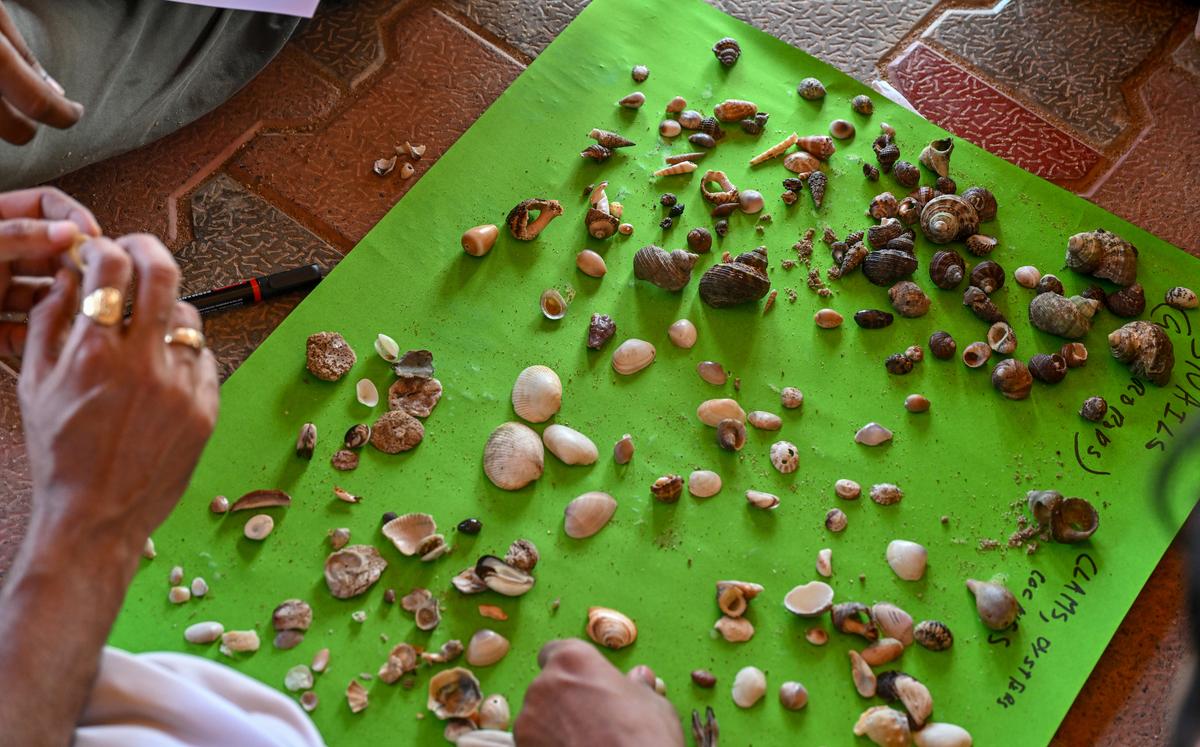
Participants learning about different types of sea shells collected during the Be A Shell Detective walk, an initiative of WWF India in association with ECCT at Rushikonda beach in Visakhapatnam. The sea shells were later returned to the coast by the participants.
| Photo Credit:
KR Deepak
“Despite repeated instructions, many participants couldn’t resist touching the shells, some of which can be venomous, like cone shells,” observes Honey Seles from WWF India. “This demonstrates knowledge gap and the need for awareness about the role of sea shells in the marine ecosystem.”
The Visakhapatnam coastline is home to about 300 documented species of sea shells, five of which are protected under the Wildlife Protection Act of India. One such example is the windowpane oyster, found in rocky shores and estuaries, which is often harvested for its meat. Other commonly-found shells include the Arabian carpet cowrie and ocellate cowrie, while olive snails and nerites are frequently spotted along the east coast.
Among these, cone snails stand out not just for their striking beauty but also for their venomous nature. “If you spot one, maintain a safe distance,” warns Pranav Tamarapalli of ECCT. “Its venom can cause temporary paralysis.”
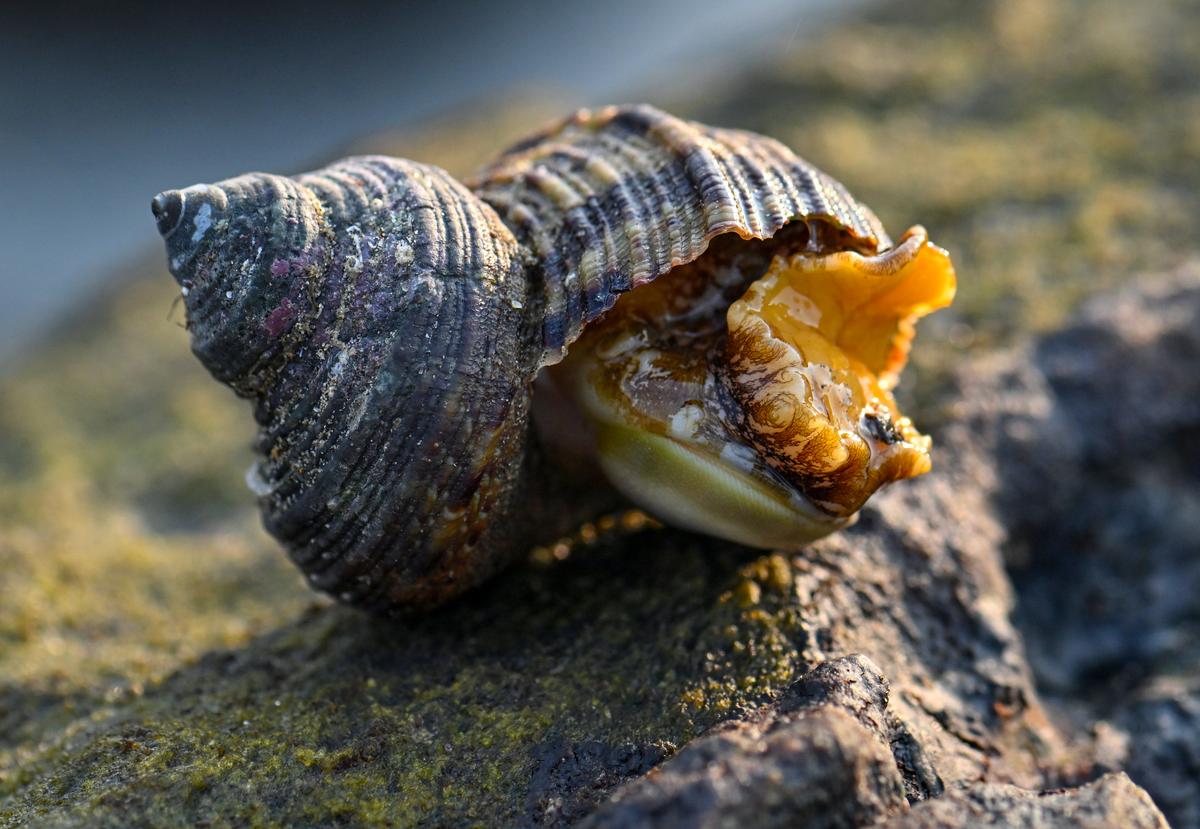
A ribbed turbo snail spotted during a seashell identification walk by WWF India and East Coast Conservation Team in Rushikonda in Visakhapatnam.
| Photo Credit:
KR Deepak
Interestingly, Pranav’s journey into marine research began with a fascination for sea shells in his childhood. “I used to collect umboniums from the Bhimli estuaries and store them outside my house, as bringing shells inside was considered inauspicious. I soon noticed robins using them to decorate their nests, which piqued my curiosity and led me to study their significance. Today, I see my niece doing the same, which underscores how naturally children connect with sea shells and coastal ecosystems. This is why guided intertidal walks play a crucial role in conservation,” he says. A marine researcher, Pranav educates people on the importance of preserving these marine treasures in their natural habitat.
The dark side
Despite legal protections like the Wildlife Protection Act, enforcement mechanisms for marine species conservation in India remain weak, with challenges such as inadequate monitoring, low conviction rates, and insufficient awareness among coastal communities. In other parts of the world like in Florida, USA, recreational sea shell collection is generally permitted, but one must ensure shells do not contain living organisms. Collecting sea shells from protected areas is prohibited there.
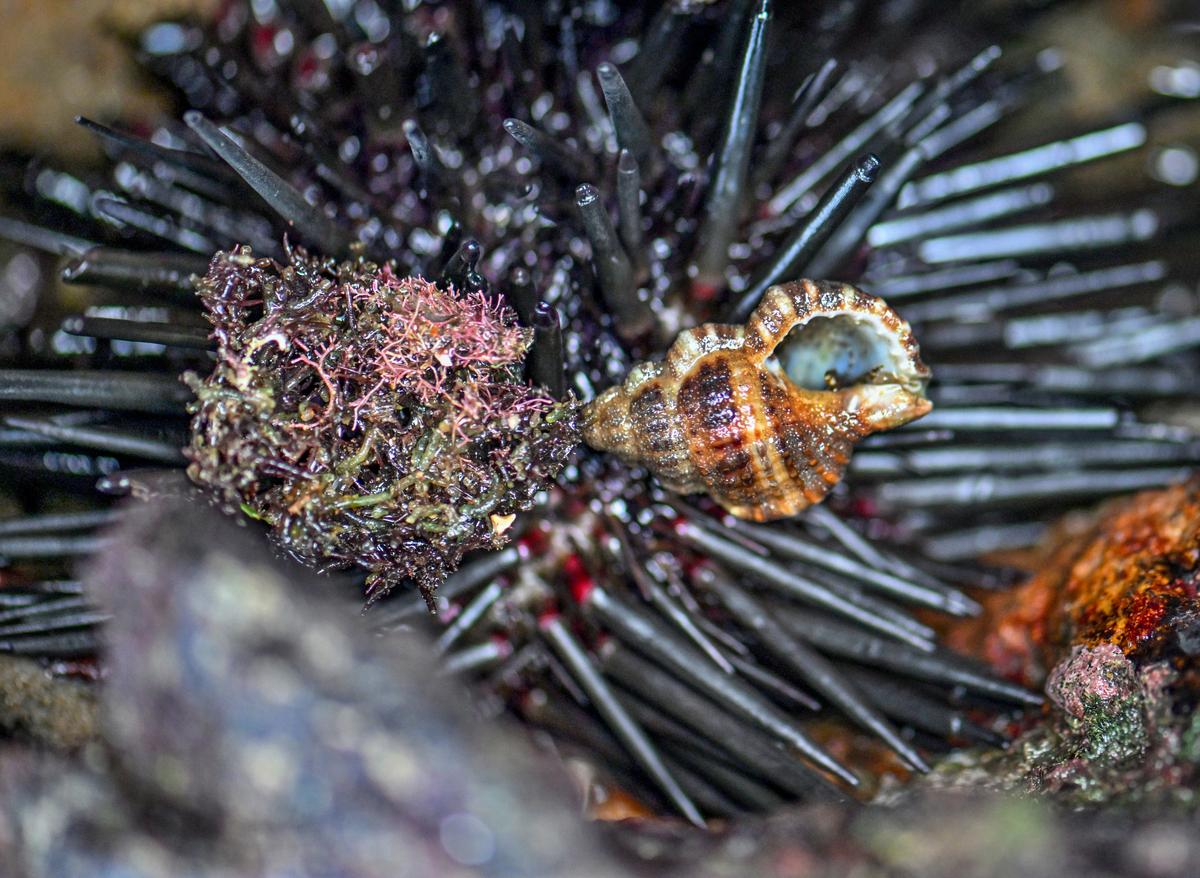
A common triton spotted during a seashell identification walk by WWF India and East Coast Conservation Team in Rushikonda in Visakhapatnam.
| Photo Credit:
KR Deepak
In Visakhapatnam, the collection and commercialisation of sea shells remain a pressing concern. At RK Beach, vendors sell sea urchins, often stripping them of their spines and painting their bodies white to be sold as ashtrays. A recent survey by the Wildlife Crime Control Bureau uncovered widespread practices of using protected shells for decorative purposes. While many local livelihoods depend on sea shell collection, a balanced approach — educating vendors on which shells to avoid — can help mitigate ecological damage.
WWF India in association with TRAFFIC (Trade Records Analysis of Flora and Fauna in Commerce) has taken steps to bridge this gap by bringing out an identification booklet featuring sea shells from across Indian coasts. Under the Wildlife Protection Act (WPA) of 1972, various species of marine molluscs are legally protected. Of India’s 3,400 marine molluscan species, only 24 have been included under the WPA. Some of the notable ones among them include the trumpet triton, found along Tamil Nadu and the Andaman and Nicobar Islands, and the gold-banded volute, which thrives along the southeast coast and in Lakshadweep. The latter, unfortunately, has high demand in the shell craft industry.
Role of shells in marine ecosystems
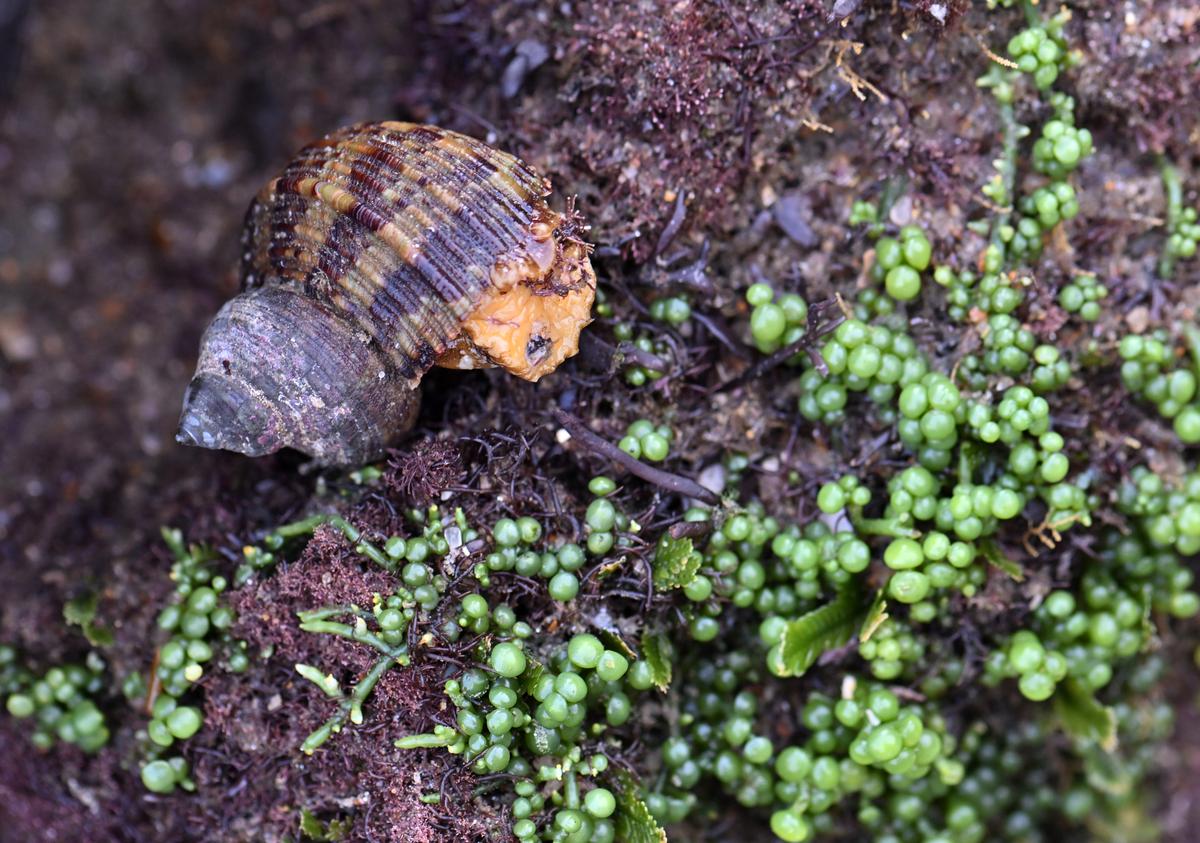
Burnt turbo spotted during a seashell identification walk by WWF India and East Coast Conservation Team in Rushikonda in Visakhapatnam.
| Photo Credit:
KR Deepak
Beyond their aesthetic appeal, shells play a vital role in sustaining marine life. Species like nerites and limpets actively control algae growth on rocks. This balance prevents algae from overpowering sponges and corals, fostering a healthier reef ecosystem. “Unchecked shell collection disrupts these intricate ecological interactions, endangering the very habitats they support,” says Shaik Akbar of WWF India.
Beachcombers collecting shells might seem like the obvious culprits. “But tourism impacts shells in many other ways, ” says Pranav and adds: “For instance, the heavy machinery used to groom sandy shores or beach nourishment process often crushes delicate shells in the process — a practice widespread across popular tourist beaches across the world.” The removal of large shells and shell fragments also has the potential to alter the rate of shoreline erosion.
This summer, instead of collecting sea shells as keepsakes, consider a more sustainable alternative — capture their beauty through photographs and contribute to marine research. Upload your findings on the iNaturalist app under the Sea Shells of AP section, helping scientists and conservationists document and protect Visakhapatnam’s rich coastal biodiversity.
Published – March 20, 2025 07:10 pm IST



